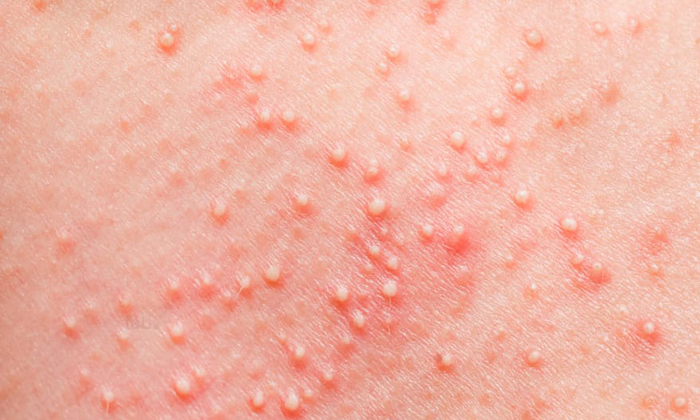
Infectious folliculitis is an infection of the upper portion of the hair follicle, characterized by a follicular papule, pustule, erosion, or crust at the follicular infundibulum; the involvement can extend deeper to the entire length of the follicle (sycosis).
Causes of Infectious Folliculitis
Folliculitis develops when bacteria, such as Staphylococcus, or a fungus enters the body through a cut, scrape, surgical incision, or other break in the skin near a hair follicle. Scratching the affected area can trap fungus or bacteria under the fingernails and spread the infection to hair follicles on other parts of the body.
Symptoms of Infectious Folliculitis
- Rash (reddened skin area)
- Pimples or pustules located around a hair follicle
- May crust over
- Typically occur on neck axilla, or groin area
- May present as genital lesions
- Itching skin
Diagnosis
Diagnosis is based on the patient’s medical history and observations. Laboratory analysis of the substance drained from a pustule can be used to distinguish bacterial folliculitis from fungal folliculitis.
Treatment
Prophylaxis Correct underlying predisposing condition. Washing with antibacterial soap or benzoyl peroxide preparation.
Antimicrobial Therapy Bacterial Folliculitis
Gram-negative Folliculitis: associated with systemic antibiotic therapy of acne vulgaris. Discontinue current antibiotics. Wash with benzoyl peroxide. In some cases, ampicillin (250 mg qid) or sulfamethoxazole-trimethoprim qid. Isotretinoin.
Fungal Folliculitis Various topical antifungal agents. For dermatophytic folliculitis: terbinafine, 250 mg PO for 14 days, or itraconazole, 100 mg bid for 14 days. For Candida folliculitis: fluconazole or itraconazole, 100 mg bid for 14 days.
Demodicidosis Permethrin cream.
Pseudofolliculitis Barbae Rule out secondary S.aureus infection. Discontinue shaving. Use beard clipper instead of safety razor. Destruction of hair follicle: electrolysis; laser hair removal.
Prevention
- Men should not shave while the beard area is infected.
- Avoid constricting clothing. Tight clothes — especially jeans and athletic wear — may be stylish, but make sure they don’t chafe your skin.
- Daily shampooing can help prevent folliculitis in the scalp. The spread of infection can be prevented by not sharing towels or washcloths.
References